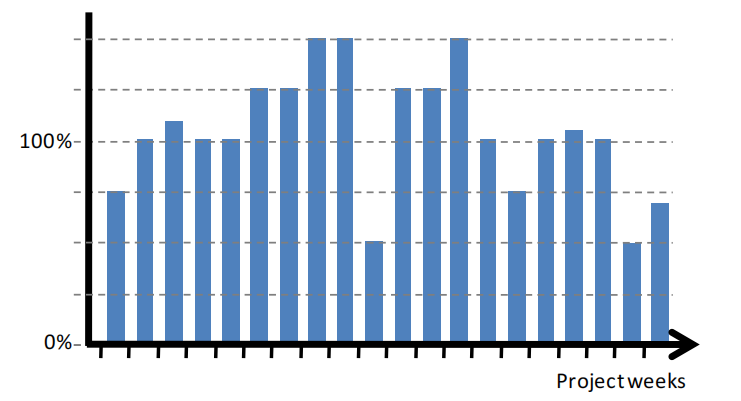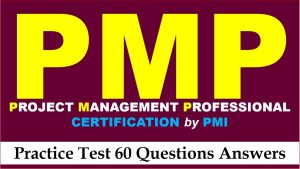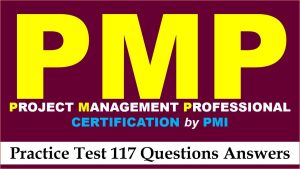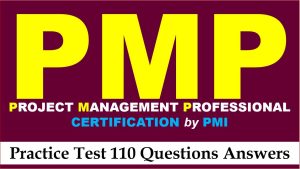Hi PMP aspirants, welcome to AKVTutorials. Ready to test your understanding of PMP concepts with practice questions that challenge your knowledge of scope management? Test your understanding of scope management with our PMP Project Management Professional practice questions, a vital step in your exam preparation. In this article, you will get PMP Exam Practice Questions Set 31 Answers And Explanations. PMP (Project Management Professional) is a certification offered by PMI (Project Management Institute) to get a skill managing the people, processes, and business priorities of professional projects. The PMP certification holders are called Project Manager who have proven they have project leadership experience and expertise in any way of working.
PMP Exam Practice Questions
PMP Practice Test Question No 1
A project team was asked by a customer to shorten the cycle time of an iterative-incremental approach. What benefits may the customer hope to achieve?
Option A : Increased predictivity of the project
Option B : Shorter feedback loops
Option C : Easy reprioritization
Option D : Longer lead times for resource booking
Show/Hide Answer
Answer Keys: YES
Explanation: No
Correct Answer: B, C , D
Shorter feedback loops, Easy reprioritization , Longer lead times for resource booking
PMP Mock Test Question No 2
What is not true for change requests?
Option A : Change requests should always be handled in a controlled and integrative fashion.
Option B : Change requests surpassing the formal change control processes can lead to scope creep.
Option C : Professionally managed, change requests can help improving a project and resolving emerging problems.
Option D : Change requests are always a sign of bad planning and should therefore be avoided.
Show/Hide Answer
Answer Keys: YES
Explanation: No
Correct Answer: D
Change requests are always a sign of bad planning and should therefore be avoided.
PMP Practice Exam Question No 3
You recently assigned staff members to activities, estimated work and scheduled your project. You then created the following resource histogram for your staff: What does this diagram tell you?

Option A : The project can probably not be finished as scheduled.
Option B : You may be able to finish the project early by reassigning work.
Option C : You should avoid network logic diagramming for scheduling.
Option D : You may run into problems with dual reporting relationships.
Show/Hide Answer
Answer Keys: YES
Explanation: No
Correct Answer: A
The project can probably not be finished as scheduled.
PMP Mock Exam Question No 4
A project manager’s PDM network schedule gets audited by a scheduling expert. The expert tells the project manager to focus more on nodes with “path convergence”, also known as “sinks”. What is the person referring to?
Option A : Nodes in a WBS, where several branches are brought back together.
Option B : Nodes in a conditional network diagram, at which it becomes deterministic.
Option C : Nodes in a decision tree, showing various branches with the same chance.
Option D : Nodes in a network logic diagram which have multiple predecessors
Show/Hide Answer
Answer Keys: YES
Explanation: No
Correct Answer: D
Nodes in a network logic diagram which have multiple predecessors
Project Management Professional Question No 5
The members of your project team have been assigned to your project with general availability levels of 50%. Yesterday, they reported to you that significant variances occurred during project execution. You have noted that the team members have been spending less than 50% of their time working on your project. Your project schedule is about to become heavily delayed, and deadlines are in jeopardy. What should you do?5
Option A : Talk to your sponsor and try to get more resources assigned on similar conditions as the existing ones.
Option B : Talk with functional managers. Negotiate clear and written assignments with reliable scheduling priorities.
Option C : Ignore the difficulties, adjust your schedule and negotiate new deadlines according to the slower progress.
Option D : Focus on internal charges. Make sure that your project is not getting charged for more than the actual work.
Show/Hide Answer
Answer Keys: YES
Explanation: No
Correct Answer: B
Talk with functional managers. Negotiate clear and written assignments with reliable scheduling priorities.
PMP Certification Prep Question No 6
What is the meaning of the acronym CSOW?
Option A : A statement of work that is part of a contingency plan; it is commonly linked with Contingency reserves.
Option B : A statement of work that has been formally agreed upon by both parties and is therefore part of a contract.
Option C : A statement of work that is currently valid; this contrasts with the scope baseline, a formerly valid SOW.
Option D : A statement of work on project level that cumulates statements of work on cost account level
Show/Hide Answer
Answer Keys: YES
Explanation: No
Correct Answer: B
A statement of work that has been formally agreed upon by both parties and is therefore part of a contract.
PMP Exam Question No 7
Crashing describes a technique to speed up a project by
Option A : …reallocating existing resources or assigning additional resources to the project.
Option B : …overlapping activities which were originally planned to be done in sequence.
Option C : …reducing the number of features of the product in order to reduce development work.
Option D : …reducing the duration estimates for activities to increase the pressure applied to the staff.
Show/Hide Answer
Answer Keys: YES
Explanation: No
Correct Answer: A
…reallocating existing resources or assigning additional resources to the project.
PMP Exam Sample Question No 8
During risk identification sessions, you and your team identified more than 150 risks for your project. You are afraid that evaluating each of these risks quantitatively will cost you an enormous amount of time, while not all of them are really relevant and important enough to justify such a measure. What should you do next?
Option A : Identify risk triggers where possible. Analyze only those risks quantitatively for which no trigger could be found
Option B : Use qualitative risk analysis in order to prioritize risks for further action, such as quantitative risk analysis.
Option C : Assess the probability of each risk qualitatively and further analyze only those risks with high probability.
Option D : Assess the potential impact of each risk qualitatively and further analyze only those risks with high impact.
Show/Hide Answer
Answer Keys: YES
Explanation: No
Correct Answer: B
Use qualitative risk analysis in order to prioritize risks for further action, such as quantitative risk analysis.
PMP Exam Practice Question No 9
During execution of a project, you observe that the performance of some of your team members is dropping, while others are doing a consistently good job. This is endangering overall project progress. What should you try first to bring the team as a whole back to performance?
Option A : Organize a team meeting and discuss openly the bad performance of the weak team members. Try to find a joint solution during the meeting.
Option B : Introduce a competitive incentive system with a bonus for the 20% of your team which is performing better than the other 80%.
Option C : Do not interfere, but give the team some time to organize and to sort the problem out themselves.
Option D : Research causes for bad performance, solicit systematic feedback and search for solutions based on that.
Show/Hide Answer
Answer Keys: YES
Explanation: No
Correct Answer: D
Research causes for bad performance, solicit systematic feedback and search for solutions based on that.
PMP Certification Exam Question No 10
Your management announced that they want to put you on a stretch assignment. In this situation, you should consider that…
Option A : …a stretch assignment is going beyond your qualifications right from the start. Whatever your education, knowledge and skills are, you cannot fail personally. Congratulations.
Option B : …key stakeholders must have timely and complete information regarding your qualifications to make decisions regarding your suitability for the assignment.
Option C : …stretch assignments bear an increased risk of failure, and this is rarely outweighed by the learning and development experience expected to come with the assignment.
Option D : …you should avoid the increased hassle coming with the assignment. It will not be enough for you to simply satisfy requirements and achieve objectives. You will have to learn a lot.
Show/Hide Answer
Answer Keys: YES
Explanation: No
Correct Answer: B
…key stakeholders must have timely and complete information regarding your qualifications to make decisions regarding your suitability for the assignment.



